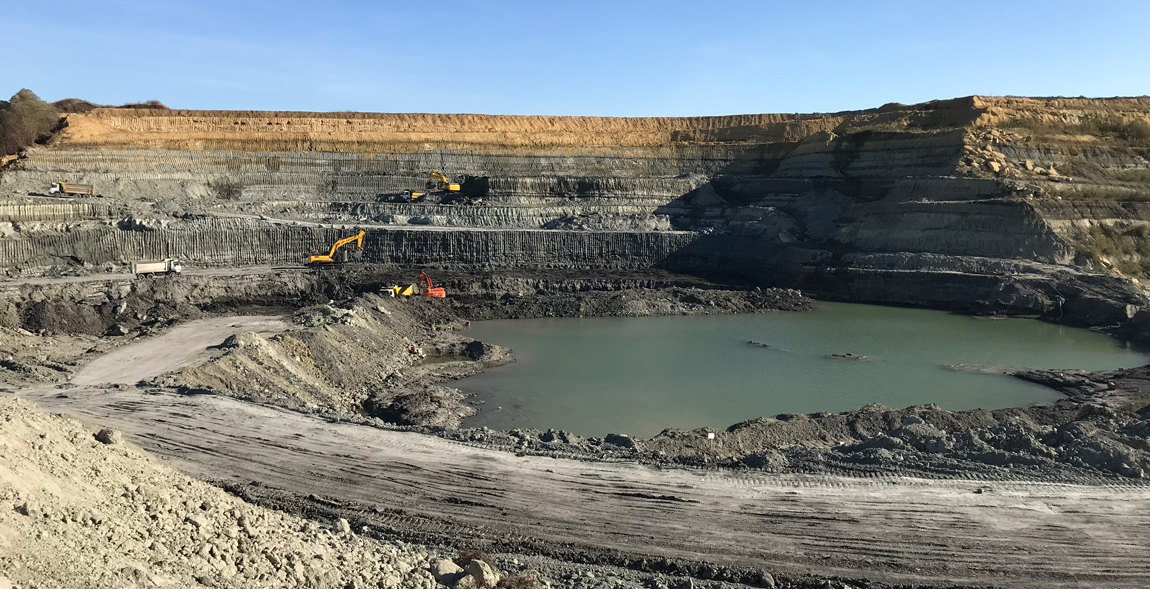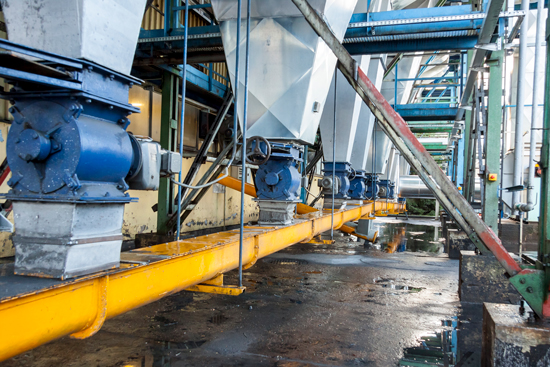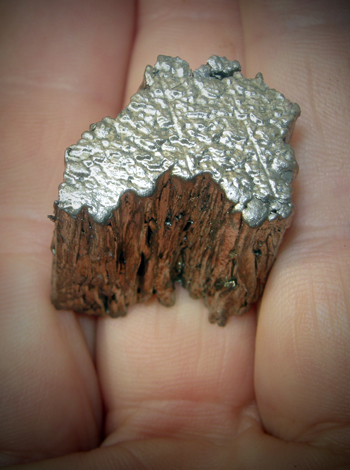
The idea that one product, just one product, can help create high-end bicycle frames, concrete, drywall, and mechanical pencils can sound more like a late night As Seen On TV sales pitch than a potential answer to environmental and economic concerns. However, researchers including Sarma Pisupati, professor in the College of Energy and Mineral Sciences (EMS) and co-director of the EMS Energy Institute’s Coal Science and Technology program, believe that extracting rare earth elements (REEs) from one waste product—coal ash—can provide an economic and environmentally solution to coal byproduct waste.
According to the Energy Information Association (EIA), in 2017 coal burning for energy generation was down five hundred thousand tons from 2012. However, many eastern and midwestern states still rely on coal as their baseload energy supplier. Pennsylvania annually mines 734.8 trillion Btu of coal which generates more than 30 million tons of coal ash to be stored or discarded by plants, according to the EIA.
“My view is that coal will lose its share for power applications, but coal is likely to become a value-added material resource,” Pisupati said. Coal ash, a waste product found in mines or left after coal is burned, contains a mix of seventeen REEs that through additional refinement can become key materials for a wide range of consumer and industry products. Research by the American Chemistry Council identified that the abundant magnetic, luminescent, electrochemical, and thermal properties found in REEs can support such sectors of the American economy as electronics, health care, transportation, power generation, and petroleum refining.
“We can make a lot of products from coal that we are not able to make now because coal use has come down,” Pisupati said. Removing REEs could provide solutions to the waste created by burning coal and the United States’ reliance on REEs imports from other countries, including China.
Traditionally, coal preparation and combustion byproducts are disposed of by dumping the waste in landfills and retention ponds near plants or emitting gases into the atmosphere. Extracting REEs could divert some of the roughly 130 million tons of coal ash annually produced away from landfills and provide a use for coal byproducts that are removed during mine cleaning and preparation.

Along with the creation of consumer goods, collected REEs can also be used to support the renewable or alternative energy sector. Wind turbines, hydroelectric dams, and solar panels all require a mixture of concrete, semiconductor materials, and carbon fibers to construct, and coal ash waste may be used as a replacement for sand in concrete, or to make lighter, stronger pieces including turbine blades. Other elements in coal byproducts can be used to make batteries for energy storage or electric vehicles.
Public pressure, concerns about the environmental impacts of coal burning, and governmental regulations have helped push much of the energy industry away from a sole reliance on coal and toward alternative and renewable energy sources, a move that would be difficult to reverse Pisupati said.
“It would be hard to make the 180-degree turn back to coal generated power because [the power] industry is now looking at coal as a resource material than putting coal back in to power,” he said.
Research into alternative disposal methods and uses for coal ash began in the 1990s but experiments and studies during the past five years have shown the process is an economically viable option.
China, the current leader in commercial REEs extraction, uses ion exchange for the removal of REEs from coal byproducts. A study in 2016, completed by a team of researchers including Pisupati and published in Metallurgical and Materials Transactions E, concluded that using aqueous ammonium sulfate, an ionic liquid, as a lixiviant is also an effective method for extracting REEs from Pennsylvania coal products.
Through examining data from the United State Geological Survey (USGS), the Lower Kittanning coal bed in the northern Appalachian Basin coal region in Pennsylvania and tests in the laboratory, the team identified an additional, low-cost way to obtain a greater supply of coal ash before mining begins along with removing higher value coal. All coal contains a small amount of minerals before it is washed and scrubbed for energy production or manufacturing. The goal is to mine coal that produces the smallest amount of ash as possible to create the most marketable supply. However, this can be difficult to obtain in shallow surface mines that may have a large bench of ash. Previously seen as an expensive waste product, benches that are rich in REEs could be removed before mining to become an additional source of REEs.
The study also provided further understanding of the relationship between particle size and cost of extraction along with the effectiveness of ammonium sulfate and a deep eutectic solvent as another lixiviants.
The second process involves how to best treat coal ash for the most effective extraction method. Researchers quickly identified physically separating REEs from coal ash as an expensive and time-consuming process, but still an effective option. If that method were to be used industry-wide, the study recommended understanding the relationship between the size of coal ash particles and the cost required to extract the available REEs.
Extraction by ammonium sulfate and a eutectic solvent both proved to be more successful and less expensive than physical extraction. Those results demonstrate the ability for U.S. companies to use coal ash as an abundant resource for REEs.
However, the study was unable to identify if those methods could be economically sustainable due to the possible changes power plants would need to make to process the coal ash on site or the cost of additional facilities. Pisupati believes that despite challenges it is possible to implement those methods to existing plants.
His past projects have helped Reliance Industries Limited study their petroleum coke supply and understand how carbon in coal can be converted to a gas which reduces carbon dioxide emissions but leaves a vanadium- and nickel-rich ash that is sent to a landfill. He believes that establishing the processes to extract REEs will require changes to plants but can be completed using existing tools, a mindset Pisupati calls a cornerstone of engineering.
“As we develop [a solution,] the tools also get modified and refined. We can use these tools to solve other problems as they come up,” he said. “We are problem solvers. As problems arise we should analyze the problems, break them down, and try to solve them.”
Identifying cheap and abundant sources of REEs not only provides additional uses for existing coal ash but can create a buffer to protect the United States from shifts in market prices and availability. Since the late 1990s, China has produced and exported 85 to 95 percent of the world’s REE supply. In 2014, the U.S. REE reserves consisted of 1.8 million tons compared a worldwide reserve of 130 million tons, according to the USGS.
That disparity creates a threat to domestic technology companies and manufacturers who rely on REEs for consumer products, a problem that Pisupati says could be solved if REE extraction becomes an industry-wide practice. Today, China continues to be the primary producer of mineral resources despite the existence of the technology and coal byproducts supply in the United States. Reliance on other nations for REEs, the USGS warns, creates “the potential for supply interruptions in the foreseeable future, or in the long-term.”
 An increased number of organizations, both within and outside government offices and the scientific community, have acknowledged the economic importance of developing domestic techniques for REE extraction, which has encouraged further research. Current Department of Energy (DOE)-funded projects include exploratory studies on the most efficient ways to separate REEs from coal byproducts and methods to make the process economically feasible for commercial mines and coal processing plants. West Virginia University (WVU) and the University of North Dakota are currently exploring alternative ways to recover REEs through acid mine drainage or from lignitic material, according to DOE. While a large portion of research in the field is being conducted at other universities including WVU and University of Kentucky, those universities are eager to examine Pennsylvania’s REE rich Appalachian region and collaborate with Penn State.
An increased number of organizations, both within and outside government offices and the scientific community, have acknowledged the economic importance of developing domestic techniques for REE extraction, which has encouraged further research. Current Department of Energy (DOE)-funded projects include exploratory studies on the most efficient ways to separate REEs from coal byproducts and methods to make the process economically feasible for commercial mines and coal processing plants. West Virginia University (WVU) and the University of North Dakota are currently exploring alternative ways to recover REEs through acid mine drainage or from lignitic material, according to DOE. While a large portion of research in the field is being conducted at other universities including WVU and University of Kentucky, those universities are eager to examine Pennsylvania’s REE rich Appalachian region and collaborate with Penn State.
 Pisupati’s current research provides a greater understanding about which types of minerals are more susceptible for extraction of REEs by ion exchange and other separation techniques. He sees the possibility for REEs, with certain types of mineral associations, being removed from coal byproducts becoming an industry-wide practice with the right technology that researchers at Penn State are currently developing and are near patenting.
Pisupati’s current research provides a greater understanding about which types of minerals are more susceptible for extraction of REEs by ion exchange and other separation techniques. He sees the possibility for REEs, with certain types of mineral associations, being removed from coal byproducts becoming an industry-wide practice with the right technology that researchers at Penn State are currently developing and are near patenting.
“As engineers we can solve this problem in both an environmentally friendly way and an economically viable way. If it is expensive, no one can afford the technology,” Pisupati said. “Rather than blame what it is, we need to start changing it.”

